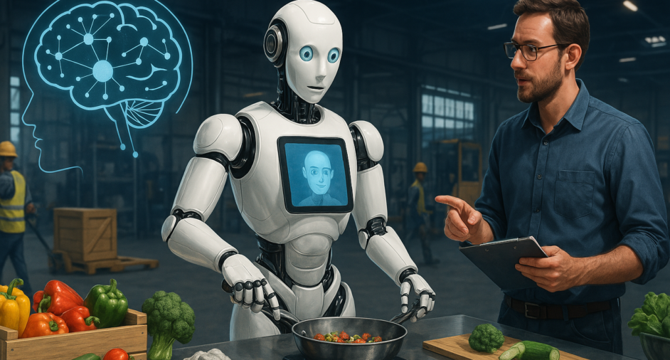Unite
7d
203

Image Credit: Unite
The Rise of Smarter Robots: How LLMs Are Changing Embodied AI
- Recent advances in large language models (LLMs) are transforming robots, making them smarter, more flexible, and better at working alongside humans.
- Embodied AI allows robots to interact with the physical world, bridging digital intelligence with real-world applications like manufacturing, healthcare, and household tasks.
- Modern embodied AI focuses on adaptability, where robots can learn from experience and act autonomously, enhancing their capabilities.
- Large language models (LLMs) like GPT enable robots to understand natural language, improving communication, decision-making, and planning abilities.
- LLMs assist robots in learning new tasks through language-based feedback, enhancing their skills without constant human intervention.
- LLMs have been integrated with embodied AI, enabling robots to handle complex tasks, adjust plans based on feedback, and learn from past experiences.
- Multimodal integration of LLMs combines language with sensory inputs like vision or touch, enhancing robots' ability to understand and perform tasks based on integrated data.
- Real-world applications of LLM-powered robots include household assistance, industrial processes, hospitals, and labs, showcasing the practical impact of this technology.
- Challenges in LLMs in embodied AI include accuracy in translating language into action, computational demands, and ethical considerations regarding autonomy and safety.
- The fusion of LLMs and embodied AI is paving the way for advanced robotics, but addressing challenges like accuracy, computational efficiency, and ethical implications is crucial for the technology's future.
Read Full Article
12 Likes
For uninterrupted reading, download the app